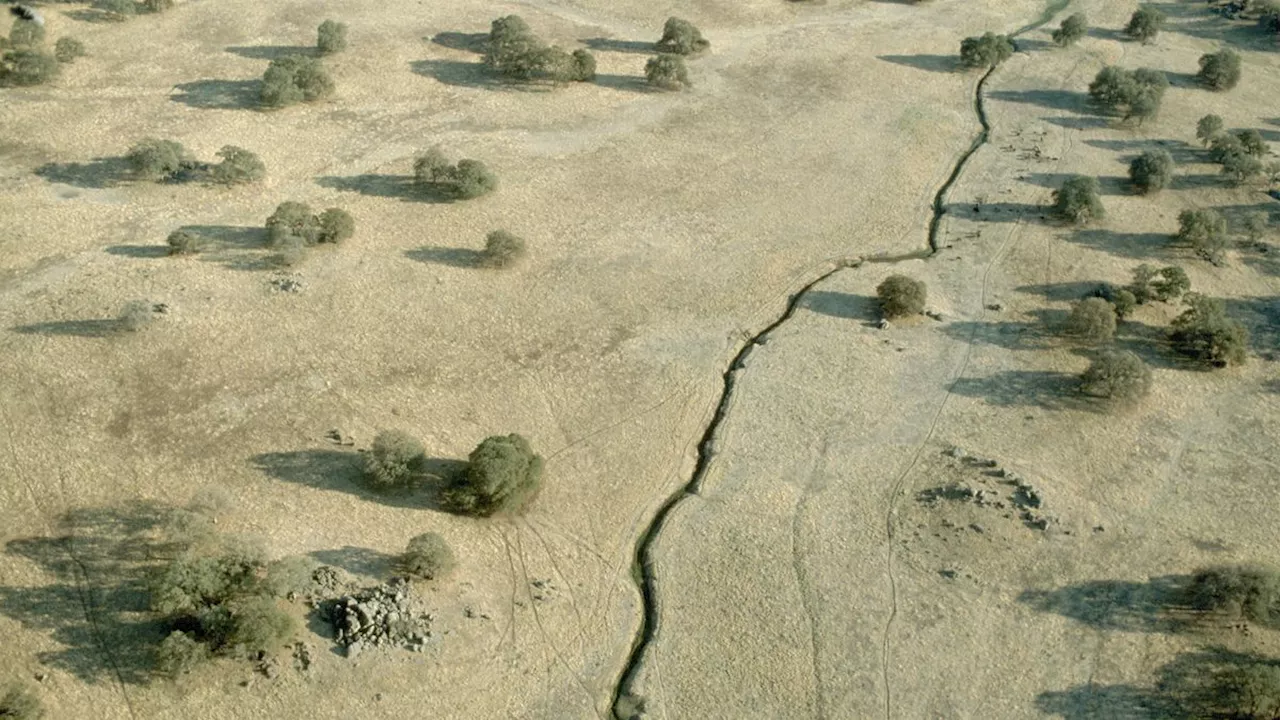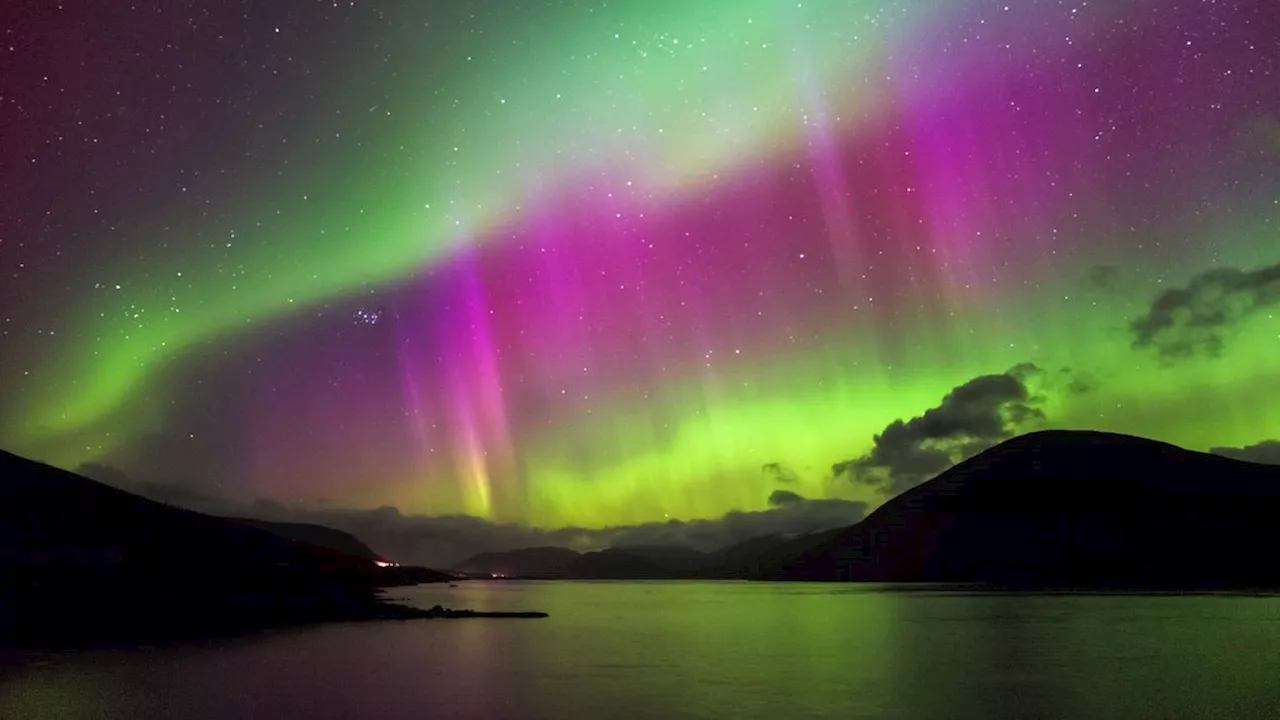A powerful solar outburst, a coronal mass ejection (CME), is predicted to graze Earth this weekend, potentially causing minor power grid disruptions and triggering colorful auroras visible from much of the northern United States. This G1-class geomagnetic storm could bring auroras to unusually low latitudes, making them visible to millions across North America.
A powerful solar outburst, known as a coronal mass ejection ( CME ), is predicted to graze Earth this weekend, potentially triggering power grid disruptions and making colorful auroras visible from much of the northern U.S. The CME erupted from the sun on January 21st and is forecast to strike Earth's magnetic field late Friday night (January 24th) or early Saturday morning (January 25th), according to the National Oceanic and Atmospheric Administration (NOAA).
The impact could trigger a minor G1-class geomagnetic storm — a temporary disruption to Earth's magnetic field that can result in radio blackouts, power grid fluctuations, satellite malfunctions, and other adverse effects. G1 events are the weakest class of geomagnetic storms and typically pass unnoticed by the vast majority of people.However, this particular CME is predicted to bring auroras to much lower latitudes than normal, potentially making the colorful skylights visible to millions of skywatchers in North America. If the solar storm hits this weekend, auroras could be visible in much of the northern U.S., including in northern Michigan and Maine. Auroras occur when charged particles from the sun collide with Earth's magnetic field, or magnetosphere. These particles skate along our planet's magnetic-field lines toward the North and South poles, striking atmospheric molecules along the way. Those molecules then become energized, emitting energy in the form of colorful light. The color of auroral light depends on the type of molecules being energized, which is also linked to their altitude in the atmosphere.While you might be able to see auroras with a powerful backyard telescope, the colors can appear brighter and crisper when viewed through a smartphone screen. That's because these devices are more sensitive to light than the human eye is, essentially letting more light in with a larger aperture. If you don't catch this weekend's auroras, don't fret; all forms of solar weather, including CMEs and the resulting geomagnetic storms, happen more frequently during the peak of the sun's 11-year activity cycle, known as solar maximum. Our star has just entered this phase of its current cycle.
Solar Storm CME Geomagnetic Storm Auroras North America
United States Latest News, United States Headlines
Similar News:You can also read news stories similar to this one that we have collected from other news sources.
 Earth Celebrates New Year with Solar Storm and Stunning Aurora DisplaysA solar storm sparked geomagnetic conditions on New Year's Eve, creating vivid aurora displays visible as far south as California, Austria, and Germany.
Earth Celebrates New Year with Solar Storm and Stunning Aurora DisplaysA solar storm sparked geomagnetic conditions on New Year's Eve, creating vivid aurora displays visible as far south as California, Austria, and Germany.
Read more »
 Northern Lights Possible in U.S. States as Solar Storms Approach EarthA pair of solar storms, predicted to arrive early this week, may trigger the Aurora Borealis in several northern U.S. states. Space weather forecasters at NOAA anticipate strong geomagnetic storms, potentially reaching a level 3 on the five-point scale, with the best viewing opportunities on Tuesday morning and possibly again on New Year's Day.
Northern Lights Possible in U.S. States as Solar Storms Approach EarthA pair of solar storms, predicted to arrive early this week, may trigger the Aurora Borealis in several northern U.S. states. Space weather forecasters at NOAA anticipate strong geomagnetic storms, potentially reaching a level 3 on the five-point scale, with the best viewing opportunities on Tuesday morning and possibly again on New Year's Day.
Read more »
 Is Earth the only planet in the solar system with plate tectonics?Skyler Ware is a freelance science journalist covering chemistry, biology, paleontology and Earth science. She was a 2023 AAAS Mass Media Science and Engineering Fellow at Science News. Her work has also appeared in Science News Explores, ZME Science and Chembites, among others. Skyler has a Ph.D. in chemistry from Caltech.
Is Earth the only planet in the solar system with plate tectonics?Skyler Ware is a freelance science journalist covering chemistry, biology, paleontology and Earth science. She was a 2023 AAAS Mass Media Science and Engineering Fellow at Science News. Her work has also appeared in Science News Explores, ZME Science and Chembites, among others. Skyler has a Ph.D. in chemistry from Caltech.
Read more »
 Solar Cycle 25: Peeking into the Future of Solar ActivityThis article delves into the current state of Solar Cycle 25, highlighting its heightened activity and the implications for future solar events. It explores recent notable solar events like the 2024 total solar eclipse and geomagnetic storms, emphasizing the ongoing increase in solar activity. While the precise peak of Solar Cycle 25 remains uncertain, it's confirmed that its activity surpasses that of the previous cycle.
Solar Cycle 25: Peeking into the Future of Solar ActivityThis article delves into the current state of Solar Cycle 25, highlighting its heightened activity and the implications for future solar events. It explores recent notable solar events like the 2024 total solar eclipse and geomagnetic storms, emphasizing the ongoing increase in solar activity. While the precise peak of Solar Cycle 25 remains uncertain, it's confirmed that its activity surpasses that of the previous cycle.
Read more »
 Anker's Solix Solar Beach Umbrella harnesses Perovskite Solar TechAnker's new Solix Solar Beach Umbrella features a perovskite solar cell technology that promises higher efficiency and lower costs compared to traditional silicon-based cells. The umbrella can generate up to 100W of power, enough to keep Anker's Solix EverFrost 2 Electric Cooler running indefinitely in sunny conditions.
Anker's Solix Solar Beach Umbrella harnesses Perovskite Solar TechAnker's new Solix Solar Beach Umbrella features a perovskite solar cell technology that promises higher efficiency and lower costs compared to traditional silicon-based cells. The umbrella can generate up to 100W of power, enough to keep Anker's Solix EverFrost 2 Electric Cooler running indefinitely in sunny conditions.
Read more »
 Jackery’s Solar Roof announced alongside new solar generator at CES 2025Jackery’s Solar Roof features curved tiles in terra-cotta red or black with a 25 percent conversion efficiency, while its DC-DC car charger outputs 600W.
Jackery’s Solar Roof announced alongside new solar generator at CES 2025Jackery’s Solar Roof features curved tiles in terra-cotta red or black with a 25 percent conversion efficiency, while its DC-DC car charger outputs 600W.
Read more »
